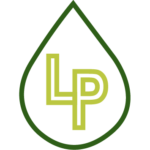Hot water units play a crucial role in providing us with the comfort of warm showers and clean dishes. However, without proper maintenance and safety measures, they can also pose significant risks. One crucial component that ensures the safe operation of hot water units is the pressure relief valve.
Pressure relief valves, also known as PRVs, are safety devices designed to prevent the build-up of excess pressure inside hot water units. They are typically installed on the hot water outlet of the unit and are designed to open and release water when the pressure exceeds a certain threshold. This helps prevent catastrophic failures such as explosions or leaks that can result in property damage or personal injury.
The importance of pressure relief valves cannot be overstated. They are a critical safety feature that protects both the hot water unit and its users. Without a functioning PRV, the pressure inside the unit can continue to rise, leading to potential damage to the unit itself and creating a dangerous situation for anyone nearby.
Regular maintenance and testing of pressure relief valves are essential to ensure they are functioning correctly. This includes checking for leaks, proper operation, and ensuring the valve is set to the correct pressure rating for the unit. In many jurisdictions, including South East Water, backflow testing requirements may also mandate the inspection and testing of pressure relief valves to ensure compliance with safety standards.
In conclusion, pressure relief valves are a vital safety feature on hot water units. They help prevent dangerous pressure build-ups and protect both the unit and its users from harm. Regular maintenance and testing of these valves are essential to ensure they are functioning correctly and providing the necessary protection.

